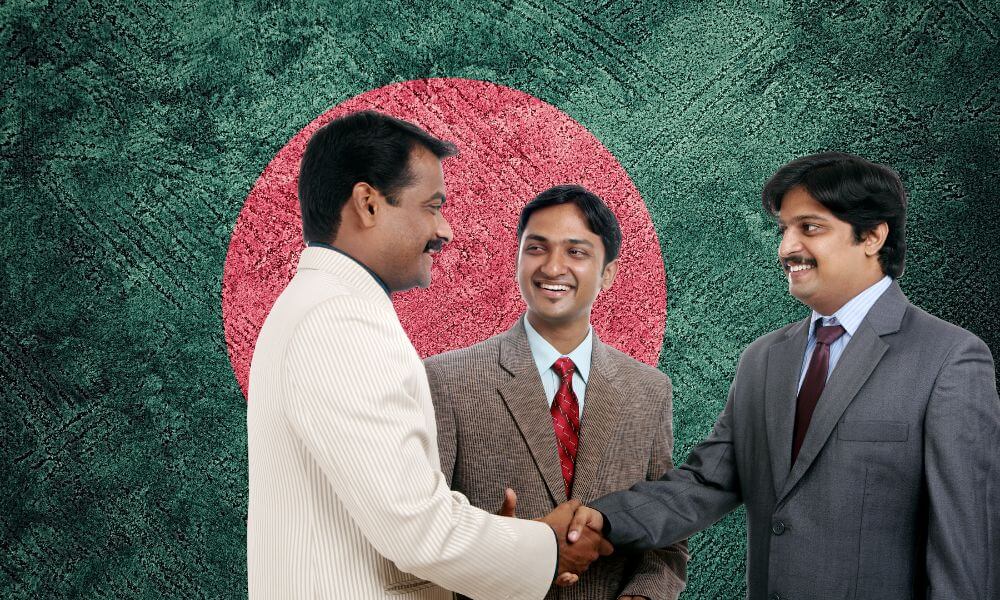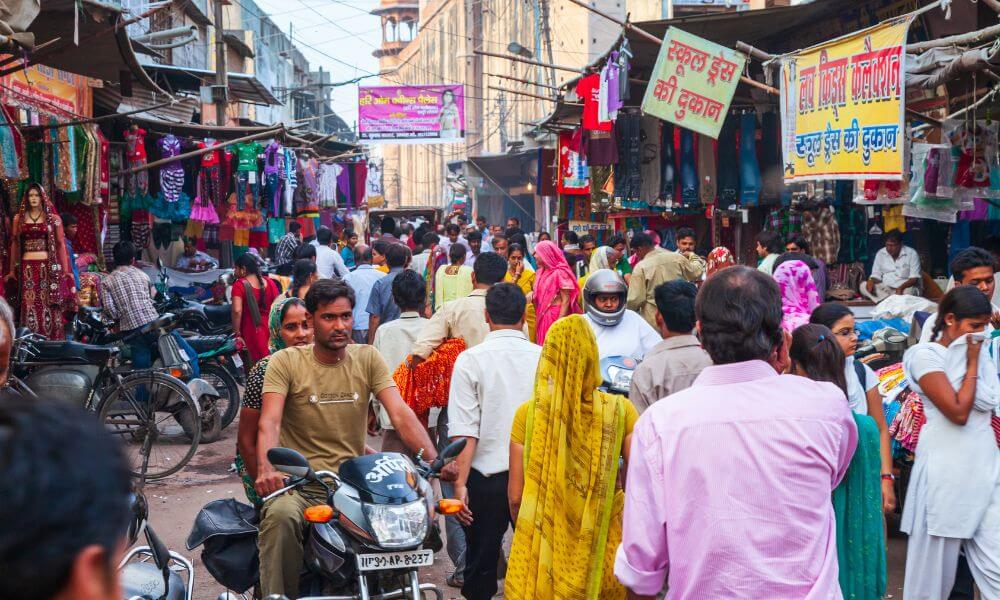The most common language in Bangladesh is Bengali, with over 98% of the country’s population speaking at least one of its dialects as their first language. Bengali is the only official language, although English is considered co-official because of its prominence in education, media, and business among the educated. There are several small indigenous languages spoken in Bangladesh as well.
Bangladesh, or country (“desh”) of the Bangla people, is an Asian country situated inside the eastern part of India, with a small border with Myanmar.
The country has a rich cultural history and is staunchly proud of its language.
Bengalis fought for their independence from Pakistan in 1971 after Pakistan started the Bangladesh Genocide, eventually achieving autonomy after an 8-month war.
The country has since flourished, growing its language after its official adoption in the Constitution of Bangladesh of 1972.

How many people speak Bengali?
Bengali, or Bangla as it is commonly called by Bengalis, is an Indo-Aryan language spoken by 300 million native speakers and 37 million second-language speakers.
It is the fifth-most spoken native language in the world.
Around 163 million people, around 98% of the population, speak Bengali in Bangladesh itself.
Bengali originated from many ancient and early languages in the Bengal area.
Sanskrit and Prakrit were common in ancient times, and from there the language gained prominence as the common language of the Pala Empire in the 9th century.
In what other countries is Bengali spoken?

Beyond Bangladesh, Bengali is widely spoken in India.
Bengali is the second most spoken language of India’s 22 scheduled languages.
Most of India’s states surrounding Bangladesh have significant populations of Bengali-speaking people.
Beyond India and Bangladesh, there are only small pockets of Bengal diaspora around the world.
What alphabet does Bengali use?
Bengali is written in Bengali-Assamese, a cursive script believed to have evolved from Brahmic script centuries ago.
The Bengali alphabet contains 29 consonants, 7 vowels, and 7 nasalized vowels, with a wide use of diphthongs (two or more vowels in the same syllable creating a unique sound).
Most Bengali is written in Standard Colloquial Bengali (SCB), although its written words often don’t match up with regional dialects.
Most literate Bengalis learn both SCB and their regional dialect to be able to communicate with Bengalis of other dialects.
What are the dialects of Bengali?
Because Bengali has been spoken since medieval times across the entire region of Bengal, it has developed several different dialects.
Even so, most Bengali dialects are mutually intelligible, helping the language and Bengali people maintain their unity.
These are the five classifications of Bengali dialects grouped by phonology and pronunciation:
- Eastern Bangali. The Bangali dialect is the most widely spoken dialect of the Bengali language common across the Khulna, Barisal, Dhaka, Mymensingh, Sylhet, and Comilla Divisions of Bangladesh.
- Rahri dialects are by around 20% of Bengalis in Southwestern Bengal (most of which is in India). They are spoken in the Presidency, Burdwan, and Murshidabad areas.
- These varieties are found in West Bengal, India, and the Rajshahi division of Bangladesh. Varendri is very common in Bengali dramas and folk genres.
- Spoken in Bangladesh’s Rangpur Division and India’s West Bengal, Rangpuri is part of the KRNB cluster of varieties that include dialects spoken in Nepal. These dialects lack standardization.
- Manbhumi is spoken in the westernmost Bengali-speaking regions and some districts of West Bengal and is heavily influenced by Hindi and Odia.
What other native languages are spoken in Bangladesh?
There are many native languages spoken by indigenous people in Bangladesh and all around the Bengal area.
The area’s rich history has seen many languages come, go, and develop over millennia.
In total, there are just under 40 indigenous languages spoken throughout Bangladesh.
Only 1.6 million people in Bangladesh speak a native language other than Bengali as their home language.
Most of the indigenous languages are from the Indo-Aryan language family, just like Bengali, but there are some commonly found in mountainous regions.
The most common Indo-Aryan languages spoken in Bangladesh are:
- Chittagonian – 13 million speakers.
- Rangpuri – 10.3 million speakers.
- Sylheti – 8.5 million speakers.
- Rohingya – 0.95 million speakers.
The number of speakers above are those speaking the language both inside and outside of Bangladesh.
These numbers may vary greatly depending on the source because of inconsistent census efforts.
Non-Indo-Aryan language families commonly spoken in Bangladesh include:
- Austroasiatic languages. These languages come from Southeastern Asian countries like Cambodia and Vietnam and include Khasi, Pnar, War, Santali, Mundari, and Koda.
- Dravidian languages. Dravidian languages are found in Southern India, although some have migrated north. Kurukh and Sauria Paharia fall into this family and are considered endangered in the area.
- Tibeto-Burman languages. Found in the mountainous regions of Bangladesh, Tibeto-Burman languages are spoken by several million of these mountain-dwellers. Meitei Manipuri, the Chin languages, Rakhine, and Mizo have over 4.5 million speakers collectively, although most of these don’t live in Bangladesh.
What foreign languages are common in Bangladesh?
English was the official language of the entire area during British colonialization.
Since Bangladesh’s independence, Bengali has slowly replaced English in the country’s government, although many laws made before its independence still are written in English.
English is a compulsory second language taught in almost all Bengali schools.
There is a large language disparity among Bengalis depending on their socioeconomic status, with the middle and upper classes usually having high levels of English comprehension and the lower classes having little to none.
After the Arabic conquest of Bangladesh in the 12th century, Arabic was made the official language.
While those of Arab descent in the country are usually the only ones speaking Arabic, the language still has had a great influence on most of the languages common in Bangladesh today. Almost 90% of Bengalis are Muslim.
Bangladesh is largely a mono-linguistic nation, with only a few indigenous and foreign languages spoken in specific contexts and areas.
With an eventful past filled with conquests, colonization, and even genocide, the Bengali people have only enjoyed independence for the past half century, although their culture and language are growing quickly and the people are hopeful for the future.
More in Regional Languages
- What Languages Are Spoken In Afghanistan?
- What Languages Are Spoken In Africa?
- What Languages Are Spoken In Albania?
- What Languages Are Spoken In America?
- What Languages Are Spoken In Antwerp?
- What Languages Are Spoken In Argentina?
- What Languages Are Spoken In Australia?
- What Languages Are Spoken In Austria?
- What Languages Are Spoken In Bangladesh?
- What Languages Are Spoken In Barcelona?
- What Languages Are Spoken In Belgium?
- What Languages Are Spoken In Bolivia?
- What Languages Are Spoken In Bosnia?
- What Languages Are Spoken In Brazil?
- What Languages Are Spoken In Budapest?
- What Languages Are Spoken In China?
- What Languages Are Spoken In Colombia?
- What Languages Are Spoken In Croatia?
- What Languages Are Spoken In Cuba?
- What Languages Are Spoken In Cyprus?
- What Languages Are Spoken In Denmark?
- What Languages Are Spoken In Djibouti?
- What Languages Are Spoken In Ecuador?
- What Languages Are Spoken In Egypt?
- What Languages Are Spoken In El Salvador?
- What Languages Are Spoken In England?
- What Languages Are Spoken In Eritrea?
- What Languages Are Spoken In Estonia?
- What Languages Are Spoken In Ethiopia?
- What Languages Are Spoken In Fiji?
- What Languages Are Spoken In Finland?
- What Languages Are Spoken In Germany?
- What Languages Are Spoken In Japan?
- What Languages Are Spoken In Morocco?
- What Languages Are Spoken In South Africa?

